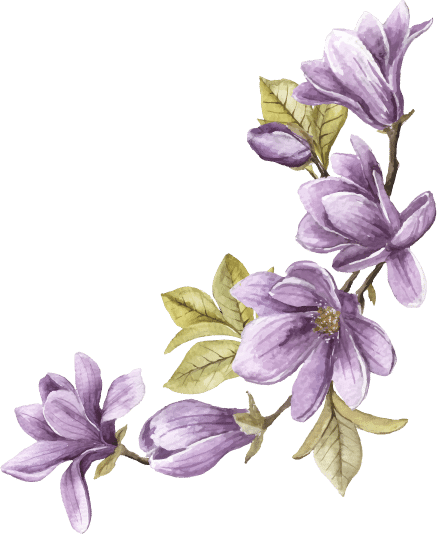Market Information
Late September to early October
Late October to December
Approximately 2.3 kilograms
Iranian Saffron Exchange
Historical pricing data spans from 2007 to present. All prices represent wholesale market rates.
Unlock advanced analytics, price alerts, and historical data export
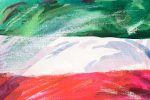
280 tons exported

45 tons exported
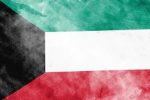
35 tons exported

25 tons exported

15 tons exported
Iranian saffron is classified into different grades based on the quality and purity of the threads. Each grade has specific characteristics that affect its price and culinary applications.
There are different types of saffron that few people are familiar with all these saffron models. Negin Toui saffron is one of the saffron models. This saffron has a wonderful pen head and a bright and shiny color.
Sargol saffron is the same saffron that is mostly prepared in one-gram and one-maghali packages for daily use, and it is prepared from the beginning of the stigma or the head of saffron. Sargol saffron has a high coloring power and a pure flavor.
In Sargol saffron, there is no information about the yellow part that saffron has or the saffron root, and only the stigma part or the cut thread is available in a completely separate and clean form. Also, this type of saffron has more pieces and broken parts compared to other types of saffron.
It is also interesting to know that there are other titles for this type of saffron, such as Sarrishe saffron, Sarqalam and Mumtaz; In addition, outside of Iran, Sargol saffron is known as ALL RED.
This type of saffron has three strands of stigma connected to each other, which makes the stigma strands to be coiled inside each other and look more beautiful and have more volume. For this reason, this type of saffron has more market.
Semi-precious saffron is something between precious saffron and Pushal. This type of saffron has many fans due to its beautiful appearance, reasonable price and high quality.
Semi-precious saffron is widely used in Lebanese, Iranian, Indian and Pakistani dishes due to its beautiful color.
This type of saffron has more stigmas and as a result it will have more coloring power than other types of saffron
Due to the presence of part of the cream, Pushal saffron has all the properties of a whole string of saffron.
This saffron is the original type of saffron that has minimal human intervention and is actually a complete string of saffron. When the farmers cut the saffron strands from the petals, they dry them and put them together. The top of these complete filaments is red and the end is yellowish orange.
By separating Sargol saffron, the root side remains, which in Iran is called white saffron or kanj. In Europe, this part is known as white or stiel. The saffron root has the same properties as the red part, of course. with a lower percentage.
Saffron flag is a product that is obtained from saffron flower and is added as a spice to food and makes the food fragrant, tasty and colorful.
In April, the cost of authentic Iranian saffron ranges from $1000 to $1500. The type of saffron, together with its quality and freshness, affects the price differential. You can get in touch with us to find out the precise cost of Iranian saffron in large quantities. We will let you know which saffron is of the highest caliber and costs the least per kilogram.
Here you can see the updated price list for each kilo of Iranian saffron.
You can buy saffron in bulk and kilo quantities from us. We have no restrictions for supplying saffron up to 100 kilos and more. You can even order a kilo of saffron in a packaged form.
There are various types of saffron packaging and you can buy it according to your taste. Khatam, atlasi, azin, gem, crystal, and envelope containers are among the types of saffron packaging.
The price of saffron is calculated at a cheaper price for customers who buy saffron in bulk.
We update the price of saffron in kilograms on this page, but if you want the price of saffron in grams, you can message us on WhatsApp. The price of saffron is determined according to the type of saffron, harvesting time, freshness, and quality. Tida Saffron company has provided you with the best Iranian saffron and can provide you with the price of Iranian saffron.
The price of saffron can be different for each type of saffron. Tida Saffron company produces the best Iranian saffron for export and exports it all over the world. and has a branch in Dubai. You can send a message to our WhatsApp or company email to contact the sales unit.
You can see the price of one kilogram of saffron and the type of saffron on this page. Also, we have written a post about the price of a kilo of saffron, which specifies what factors the price of saffron depends on
The price of saffron is specified at the top of this page. Tida Saffron company offers you the best price of saffron with more than ten years of experience in exporting. Super Nagin saffron is one of the best types of saffron that we choose for export.
The price of saffron is updated on this page. You can see the price of saffron 2023. Also, contact our email and WhatsApp number so that the Tida Saffron business team can give you the best advice about the price and type of product
📩 Email: info@tidasaffron.com
Contact Us 👇🏻
For orders and more information, send a message to WhatsApp at +971508101723 or +989121818693
Our saffron is Iranian original saffron. We have included the price of Iranian saffron on this page. For detailed information and how to send from our different branches in Iran and Dubai, you can contact us via WhatsApp or email.
The price of saffron varies according to the type of saffron and its freshness and quality. We have included the price of saffron in kilograms on the first page, but to know the exact price of saffron per ounce, just send a message to our sales team on WhatsApp.
There is an onion on the stalk of a saffron plant, which has a brown sheath. This plant grows in southwest Asia, southern Spain and southern Europe. It has a stem and six purple petals and 3 strands of red stigma.
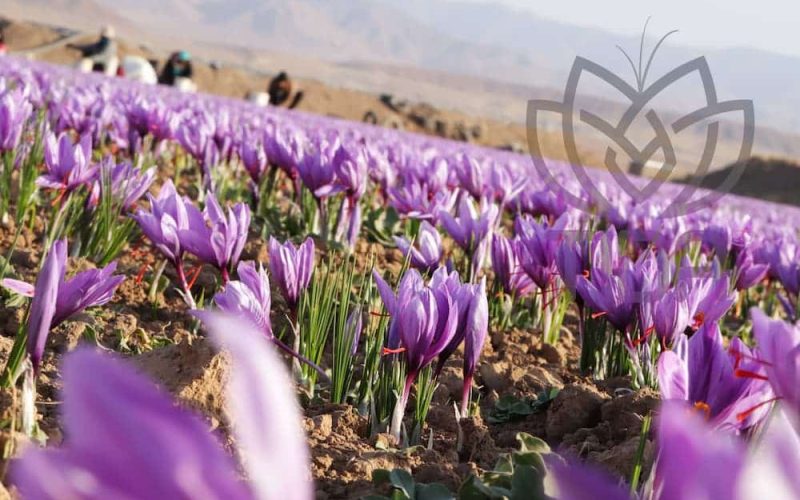
The used part of the saffron plant is the orange stigma of its flower. Saffron stigma contains fat, mineral salts and mucilage. Propagation of saffron is common only by the underground corm. The aroma of saffron is due to the presence of a colorless essential oil containing tropene and an oxygenated compound with cineole called safranal. The taste of saffron is related to the bitter heteroside picrocrocin. The color of saffron is related to the presence of a substance called crocin.
Saffron price varies according to its type. Currently, saffron is the most expensive spice in the world, with its fans all over the world, and Iran produces more than 90% of the world’s saffron. Razavi Khorasan also produces the best saffron on the planet.
Every gram of saffron costs different amounts depending on how it is packaged. Packaging quality affects the price of saffron. Packaging quality affects the price of saffron.
The daily price of saffron can be obtained from Tida saffron experts.
The therapeutic properties of saffron are numerous. Research has shown that saffron contains all kinds of useful substances and has been studied extensively. A strong anti-cancer agent, saffron contains antioxidant compounds that have made it popular for centuries. People who suffer from severe depression or stress are often recommended to take saffron.
The consumption of saffron for 6 weeks is recommended for women suffering from postpartum depression. In addition to its medicinal properties, saffron also helps in preventing all cancers, controlling blood sugar, reducing the risk of heart disease, and strengthening eyesight.
We only have one type of saffron and there are no different types.
The term types of saffron refers to how stigmas are separated from saffron cream, which results in different types of saffron. Negin, Sargol, Pushal, Khame, and Dokhtarpich are the types of saffron that are described in this explanation. For saffron prices and saffron purchases, you can contact Tida saffron experts.
There are three types of saffron: saffron for people’s use, saffron for animals, and saffron for plants. In foreign countries, it is called AII-Red, which means that it is completely red. There are three grades of Sargol saffron: premium, saffron, and saffron. Sargol saffron is pure saffron made by completely removing the cream or white part of saffron and leaving only the red part; thus, it is called all red saffron. In Sargol saffron, the stigmas are graded and priced based on their thickness, whether they are fine or coarse, and whether they are broken.
Whenever saffron flower, is moist, so this is not usable saffron. It is therefore necessary to dry these saffrons after they have been separated from the saffron flowers. There are different ways to dry saffron, manual and machine. It is known as etoui saffron, which is saffron that has been dried using a machine to make it smoother and more beautiful.
Super negin saffron is a type of negin whose saffron pen (stigma) is larger than usual. Saffron with large stigmas is one of its characteristics. Compared to other types of saffron, super negin saffron has very high coloring properties and contains more safranal and crocin.
There is some yellowness with a red stigma in shebhe negin saffron, which is something between pushal saffron and negin saffron.
The stigmas of the saffron are often separated from the lower portion of the red or cream part of the plant when farmers harvest saffron for their farms. An orange-yellow part of a stigma, known as Pushal saffron, is also present along with the red part.
Saffron from this category will have more stigmas, and as a result will be more vibrant than saffron from other categories. Saffron thread is believed to be healthy and authentic when stigmas are attached to creams.
Saffron buyers will know for certain that the saffron they have purchased is not fake this way. The fact that this type of saffron is complete strand saffron also explains why it has a lot of fans since it contains all the saffron properties.
Bunch Saffron is a complete thread that has the red and yellow parts of saffron together. In such a way that a yellow part is about 30% and the red part is about 70%. In this type of classification, saffron is intact and the stigmas of the three branches of saffron are not separated from the white part of saffron (or saffron cream). The arrangement of this model is done as one-way and two-way. In the one-way arrangement, the creams are placed on top of each other and the stigmas are placed on top of each other, but in the two-way arrangement, the stigmas are placed on both sides and the creams are placed in the middle.
Kanj saffron is not included in the category of saffron types. As soon as the head is removed from the stalk, the root or white part remains, which is known in Iran as kanj or white saffron. In Europe, this part is called white or style. Scientists believe the red part of saffron has more valuable substances than the root part, despite the general belief that the root has more fragrance. The crocin substance moves from the red stigma portion of the saffron plant to the white root portion, where more moisture is present, resulting in a stronger aroma from the saffron root. Crocin (the pigment responsible for saffron’s coloring) is not present in saffron root, but it does have some of the same properties.
✅️ For more information about the types of saffron, you can refer to the article on the types of saffron in the Tida saffron blog.
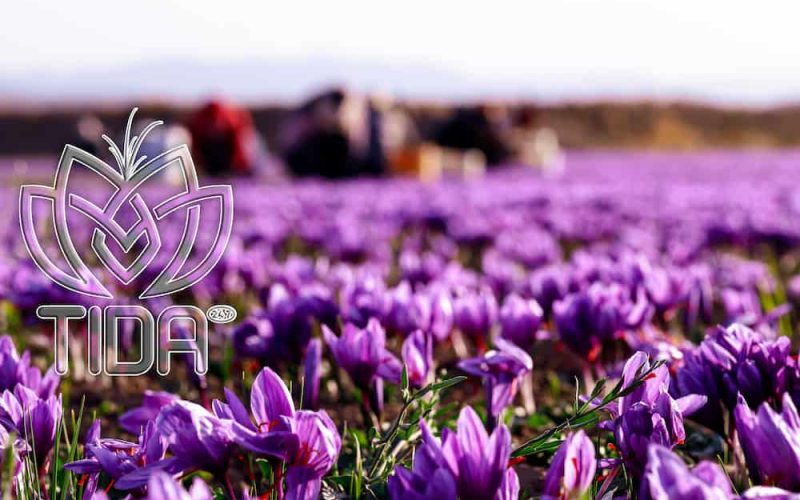
Consuming excessive amounts of saffron results in excessive blood thinning, which reduces blood pressure. As a result, the body faces many problems. Women may experience nosebleeds or uterine bleeding when their blood is too diluted. Moreover, when women are pregnant, especially during the first three months of pregnancy, which is the most sensitive time during pregnancy, saffron consumption isn’t recommended. Because it causes abortion. After the third month of pregnancy, a gynecologist should supervise the consumption of saffron during pregnancy.
Saffron consumption leads to vomiting, reduced heart rate, nose bleeding, bleeding from the eyelids, and lips bleeding, as well as dizziness, lethargy, and yellow skin, all of which can result in death. A high consumption of saffron causes severe headaches and disturbs the work of the kidneys. It also sometimes causes sensory disturbances. The condition also increases stress, changes your skin color, and results in severe weakness during menstruation.
In this situation, blood may be seen in the urine due to the warm nature of saffron, which causes severe diarrhea and water loss in the body. Saffron in any form is allowed to be consumed in an adult’s diet up to one tenth of a gram daily. It is allowed to consume up to 1 gram a day of this plant for medicinal purposes. During pregnancy, saffron consumption greater than 3 grams can cause heavy bleeding and miscarriage, and if this bleeding is not prevented, the mother will most likely die.
When we analyze the saffron ingredients, we will find that there are a large amount of vitamins and minerals, which is one of the reasons why saffron has certain properties.
Having nutrients that can cause depression is what we mean when we say that saffron is suitable for treating depression.
Among the vitamins and minerals found in saffron are vitamins B2, B3, B6, B9, A, and C. In addition to vitamins and minerals, saffron contains a good amount of minerals.
Iran produces 90% of world’s saffron
150 flowers = 1 gram of saffron
October to November annually
Cool, dry place away from light
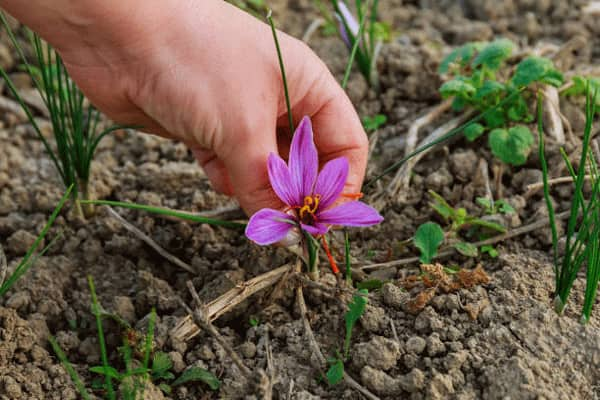
This plant has a complex physical structure. Onions and their roots are the first components of this plant.
It is recommended that people plant this plant using its bulb. In a short period of time, the stem of the onion of this plant grows, and in the next stage, the saffron flower appears. Two bulbs are located in the ground at the end of the stem of this plant.
Saffron flower is covered with long leaves, the leaves grow to cover the flower all around over time like grass. While this plant grows long and tall, its leaves are stacked on top of each other..
It is crucial that saffron is stored properly and in accordance with its principles. Unless this spice is stored properly, its aroma and more importantly its wonderful properties can be lost. It is a very expensive spice. There are several points to keep in mind when keeping saffron. A dry and cool place is the best place to store saffron. Packaging and protecting saffron should be done with glass or metal containers rather than plastic containers.
It is important that the saffron packaging be completely insulated, without any openings for air to enter. When using saffron, be sure to keep it in smaller packages so that you don’t have to open the whole package each time you need it. For saffron to retain its taste and smell, do not let it steep for an extended period of time. Saffron’s volatile essence evaporates when brewed for a long time and loses its potency. The saffron aroma in the house should prompt you to stop brewing.
Saffron should not be consumed more than twice a day and more than 30 to 50 mg per meal. The maximum consumption of saffron in a day is 1500 mg, which is less in pregnant women or those who are allergic to this spice for various reasons.
Saffron does not appear to interact with any drugs at this time. Saffron may also increase the production of serotonin hormone, so if you take anti-depressant pills, which stimulate the brain to produce serotonin, you may develop serotonin syndrome. Consult your doctor immediately if you have any questions about it.
One of the reasons for the change in the price of saffron is due to the conversion of rials to dollars, and the final price changes to dollars. Also, the wholesale price of saffron changes according to supply and demand. You know that Iranian saffron is definitely one of the best types of saffron. At Tida Saffron, we prepare different types of saffron, each type of saffron has a different price, depending on the type of consumption, you can choose the type of saffron that suits you.
If you have any questions about saffron types, you can refer to our saffron types post.
Our first-class saffron can be exported to the whole world with the best packaging from all our branches.
In short, saffron has two parts, yellow and red, first grade saffron has only red color.
Sargol saffron is one of the first-class saffron, which is included in the majority of our saffron sales.
Saffron is used in large quantities as a seasoning and food coloring in developing countries. The color of saffron is due to the presence of crocin in it.
One of the reasons why saffron is expensive is that this plant only grows in very special conditions and blooms only for one to three weeks of the year.
The brew of this plant is anti-depressant and invigorating, it improves the function of the digestive system. It washes the kidneys and bladder, as a result, it is diuretic. Blood circulation and hematopoiesis are among the other benefits of this plant.
A sweet smell and bitter taste distinguish saffron. The bitterness of saffron may be a mystery to many people. Dear ones, we must inform you that picrocrocin, a molecule present in saffron, is what gives it its bitter flavor. Therefore, if you have never tasted saffron by itself, it is best to do so just once to discover that the flavor is very bitter.
The fraudulent kind may be distinguished from the genuine one by the similar saffron bitterness. By dipping saffron strings in sugar and treats, profiteers and con artists attempt to make the weight of saffron look heavier. By tasting saffron, you can tell the real stuff from the phony. The fake saffron has a sweet or another flavor whereas the real stuff has a bitter flavor.
The most challenging, time-consuming, and delicate phase of saffron production is the saffron harvesting stage. Picking the blossom and extracting the stigma from the bloom are both steps in the saffron harvesting process. Flowers have a three to four day lifespan, and if they are not harvested in that time, they will die. Additionally, the quality of the color and aroma of the flowers as well as the quality of the saffron will decline if they are exposed to hot weather, wind, and sunshine for an extended period of time.
The season for saffron harvesting varies by region. In some places, this time starts at the beginning of November, whereas in other places, it starts at the beginning of December. Saffron should be harvested when purple flowers begin to blossom and the field becomes purple.
It is much preferable to collect saffron during the seventh to tenth day, when the quantity of blossoms reaches its peak.
Harvesting saffron may take up to 3 weeks depending on the climate and region.
The stigmas should be quickly removed from the flowers after picking the saffron flowers to prevent pollen from adhering to them.
Find answers to common questions about our Iranian saffron, pricing, quality, and shipping. Can’t find what you’re looking for? Contact us directly.
Producing just one kilogram of saffron requires handpicking over 150,000 flowers. The process is entirely manual and labor-intensive, which makes saffron one of the most valuable spices in the world.
We source our saffron directly from trusted farms in Iran, which is renowned for producing the highest quality saffron in the world.
Store saffron in an airtight container away from light and moisture. A cool, dark cupboard is ideal for preserving its aroma and color.
You can steep saffron threads in warm water or milk for 10-15 minutes, then add it to rice, desserts, teas, or stews to enhance color and flavor.
Saffron is graded based on color, flavor, and aroma. Our premium grade includes only the red stigmas, known as “sargol,” which are the most potent and aromatic.
Yes, we offer wholesale pricing for bulk orders. Please contact us directly for pricing and custom packaging options.
Absolutely! We ship worldwide. Shipping fees and delivery times may vary depending on the destination.
Saffron grade is based on the color that it produces and the quality of the color produced. Crocin is a chemical that is primarily responsible for saffron’s coloring.
Saffron’s most important properties include reducing blood fat, improving vision, and improving digestion, as well as playing an important role in coloring it. Crocin has the chemical formula C44H64O24 and a melting point of 186 degrees centigrade. Crocin has a red color and turns orange when dissolved in water. The main reason why saffron is red is due to the crocin in it. Because crocin is so soluble, it is also used as food and medicinal dye in addition to its other uses.
Saffron, which is known as the most valuable seasoning and spice in the world, is usually measured by gram and weight. Currently, each shekel is equal to 4.608 grams. Compared to kilograms, each kilogram is equal to 217 shekels.
In general, the price of saffron depends on what type of saffron we choose to buy. Whether the saffron we are considering is precious or Sargol saffron, first-class saffron, or ordinary, pushal, etc.
Saffron packaging
Type of saffron
Quality of saffron
Saffron planting place
Request to buy saffron
Type of saffron certificate
Really Sargol saffron or Super Nagin?! If you have ever seen Sargol and Supernangin saffron up close, you know that at first glance it may seem that they are very similar. Yes, it is the same. But I must say that Sargol and Supernagin are two types of saffron that have significant differences in terms of price and quality.
In the eyes of a non-professional person, Supernangin and Sargol saffron look like two saffrons, but if you pay attention to its appearance and check the chemical characteristics of these two types of saffron, you will realize that there are differences. These same differences lead to a significant price difference between this Sargol and Super Nagin.
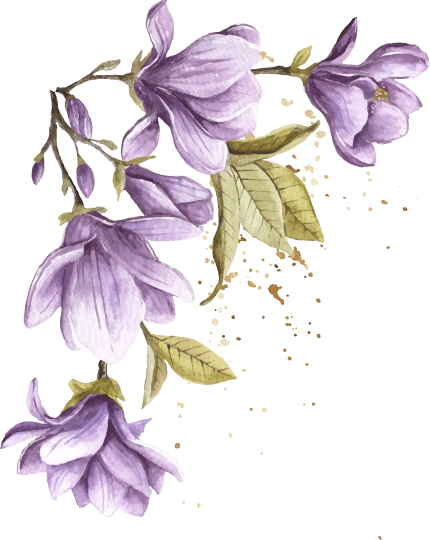
Have questions about our premium Iranian saffron? Need a custom quote for bulk orders? Our experienced team is here to help you find the perfect saffron for your needs.
Over 20 years of experience in saffron trading, quality assessment, and international shipping. We’re your trusted partner for authentic Iranian saffron.
Serving customers in 45+ countries with reliable shipping, proper documentation, and quality guarantees for every order.
